Qingxuan Li
The Conversational Short-phrase Speaker Diarization (CSSD) Task: Dataset, Evaluation Metric and Baselines
Aug 17, 2022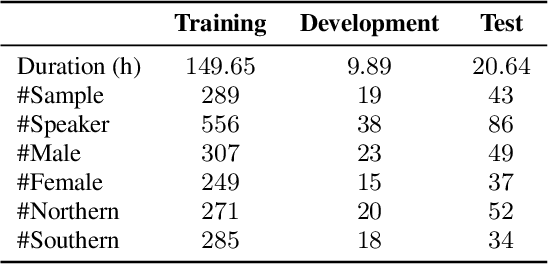
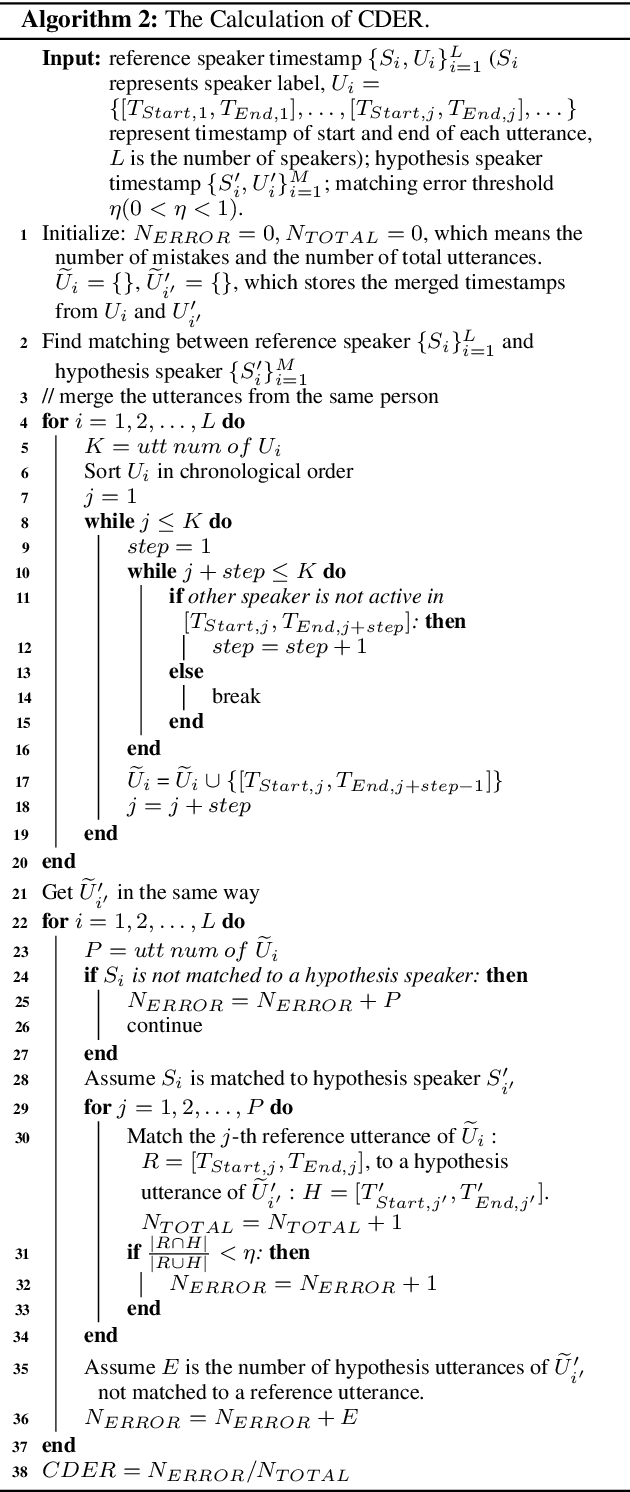
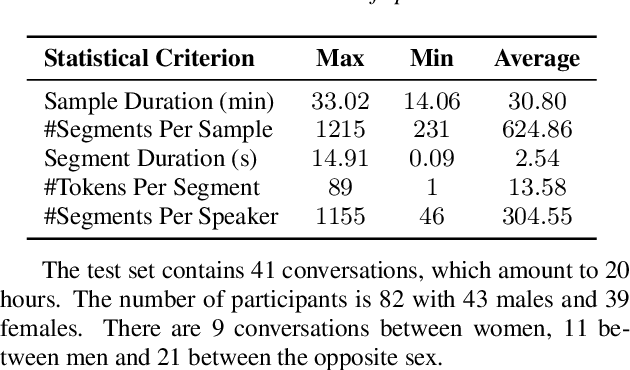
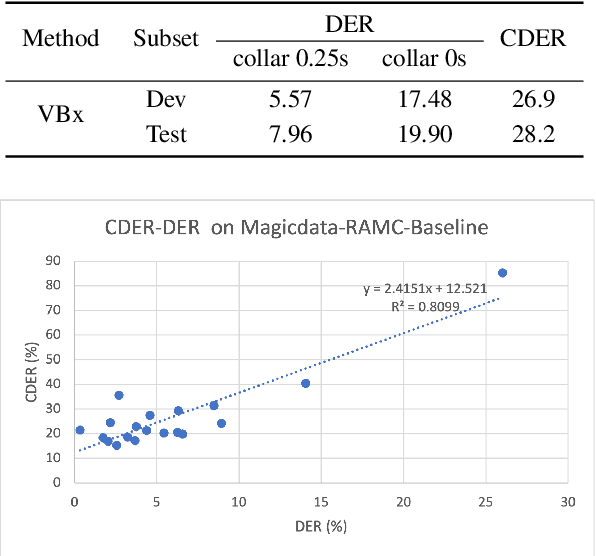
Abstract:The conversation scenario is one of the most important and most challenging scenarios for speech processing technologies because people in conversation respond to each other in a casual style. Detecting the speech activities of each person in a conversation is vital to downstream tasks, like natural language processing, machine translation, etc. People refer to the detection technology of "who speak when" as speaker diarization (SD). Traditionally, diarization error rate (DER) has been used as the standard evaluation metric of SD systems for a long time. However, DER fails to give enough importance to short conversational phrases, which are short but important on the semantic level. Also, a carefully and accurately manually-annotated testing dataset suitable for evaluating the conversational SD technologies is still unavailable in the speech community. In this paper, we design and describe the Conversational Short-phrases Speaker Diarization (CSSD) task, which consists of training and testing datasets, evaluation metric and baselines. In the dataset aspect, despite the previously open-sourced 180-hour conversational MagicData-RAMC dataset, we prepare an individual 20-hour conversational speech test dataset with carefully and artificially verified speakers timestamps annotations for the CSSD task. In the metric aspect, we design the new conversational DER (CDER) evaluation metric, which calculates the SD accuracy at the utterance level. In the baseline aspect, we adopt a commonly used method: Variational Bayes HMM x-vector system, as the baseline of the CSSD task. Our evaluation metric is publicly available at https://github.com/SpeechClub/CDER_Metric.
Interrelate Training and Searching: A Unified Online Clustering Framework for Speaker Diarization
Jun 28, 2022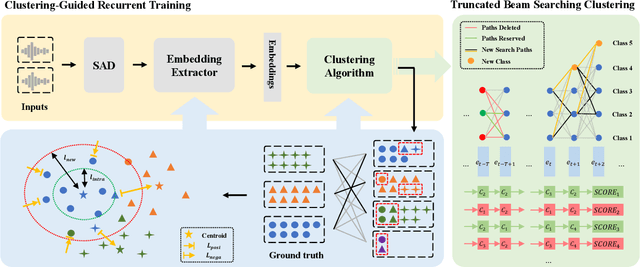
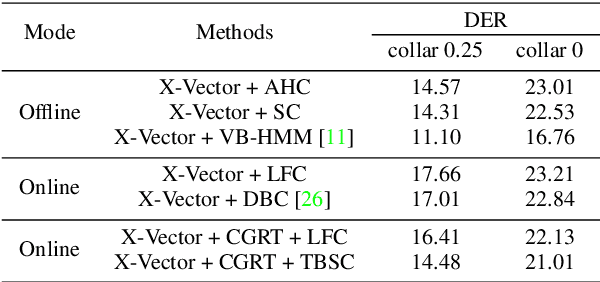
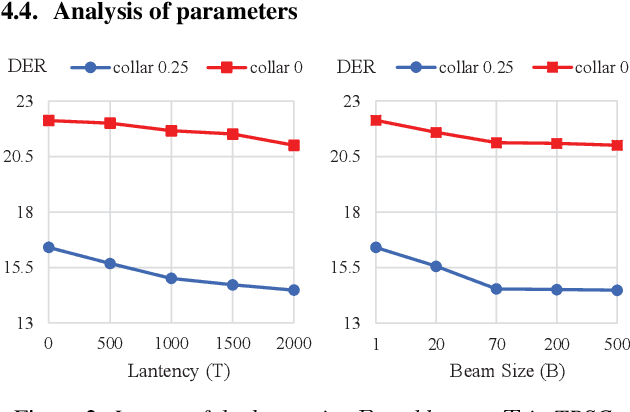
Abstract:For online speaker diarization, samples arrive incrementally, and the overall distribution of the samples is invisible. Moreover, in most existing clustering-based methods, the training objective of the embedding extractor is not designed specially for clustering. To improve online speaker diarization performance, we propose a unified online clustering framework, which provides an interactive manner between embedding extractors and clustering algorithms. Specifically, the framework consists of two highly coupled parts: clustering-guided recurrent training (CGRT) and truncated beam searching clustering (TBSC). The CGRT introduces the clustering algorithm into the training process of embedding extractors, which could provide not only cluster-aware information for the embedding extractor, but also crucial parameters for the clustering process afterward. And with these parameters, which contain preliminary information of the metric space, the TBSC penalizes the probability score of each cluster, in order to output more accurate clustering results in online fashion with low latency. With the above innovations, our proposed online clustering system achieves 14.48\% DER with collar 0.25 at 2.5s latency on the AISHELL-4, while the DER of the offline agglomerative hierarchical clustering is 14.57\%.
 Add to Chrome
Add to Chrome Add to Firefox
Add to Firefox Add to Edge
Add to Edge